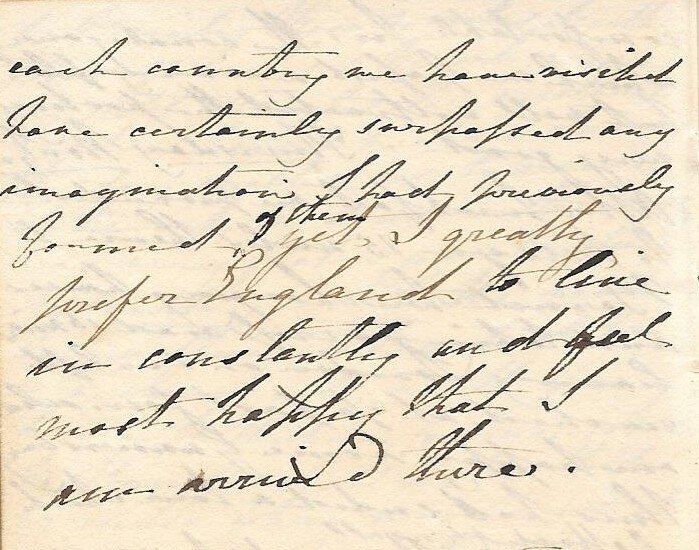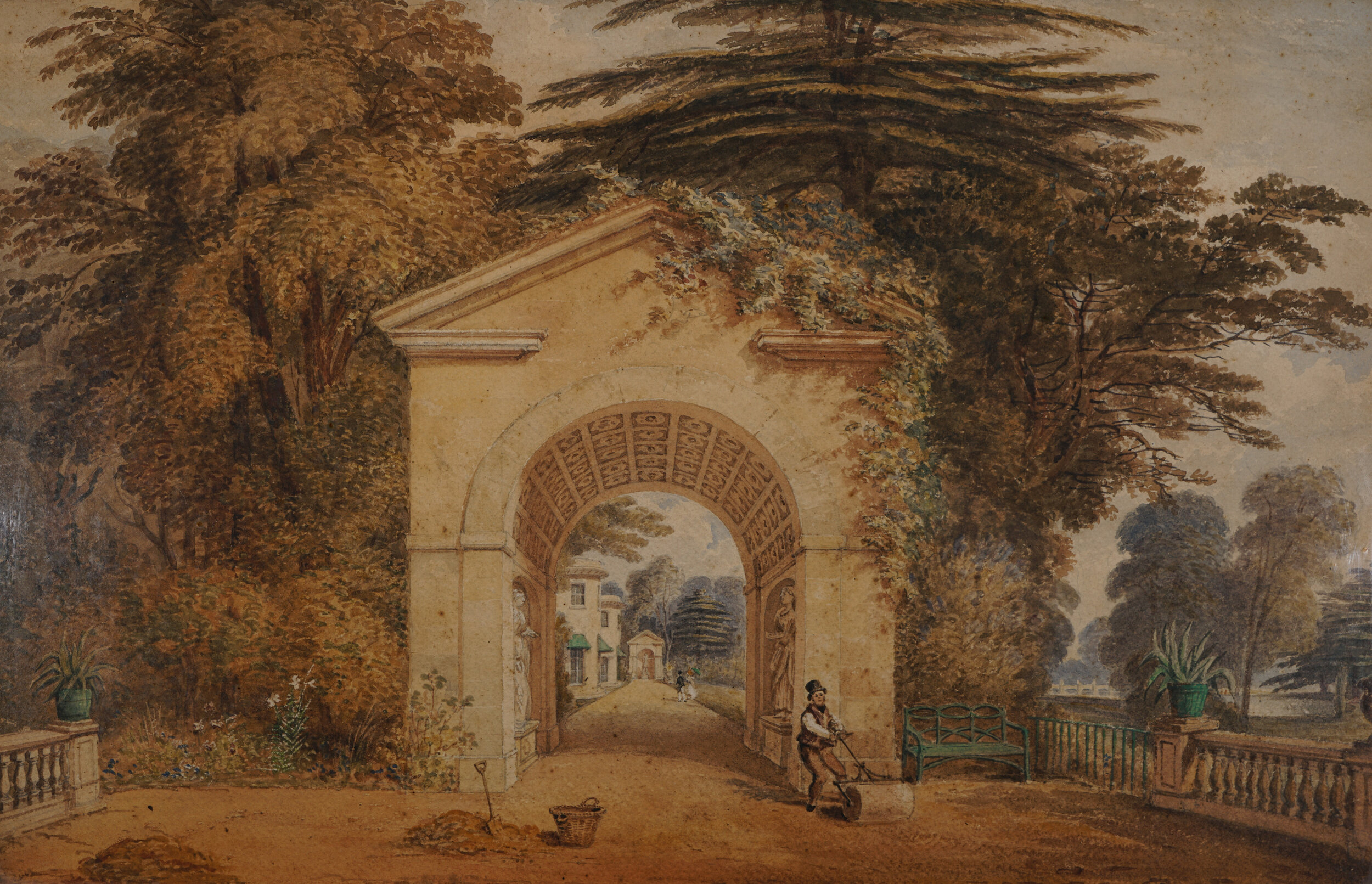Thursday 4th November 1819
Thursday Nov 4th After breakfast we proceeded to Wellyn 15 miles thence to Barnett here changing horses and taking a cross road 16 miles leaving London on our left reached at ½ past four o’clock our happy home Gunnersbury thus had ended a tour which has afforded to us all the greatest source of amusement pleasure and instruction we have travelled 3280 miles occupying the space of five months, and although the respective beauties of
each country we have visited have certainly surpassed any imagination I had previously formed of them yet I greatly prefer England to live in constantly and feel most happy that I am arrived there.
OBSERVATIONS & COMMENTS:
Welwyn is sometimes called Old Welwyn to distinguish it from the much newer settlement of Welwyn Garden City, about a mile to the south, though some residents dislike the suggestion of inferiority or irrelevance that tends to be implied by the moniker "Old" and prefer Welwyn Village. In the 17th century, as it lies on the old Great North Road, it became an important staging post and a number of coaching inns remain as public houses. https://en.wikipedia.org/wiki/Welwyn . The Wellington is described as a beautiful 700 year old former coaching inn, steeped in history: the diarist Samuel Pepys stayed here in the 1600's.
Welwyn: Wellington Inn by Nigel Cox. The front gable of this Grade II Listed Building has A.D. 1352 prominently shown, but the English Heritage website is a little more circumspect about the current structure, describing it thus:- "Public House. Probably early C17 timberframed. Plastered jettied gabled centre with c1725 3 and 4 window fronts N and S. Red brick. Machine tile roof. Moulded and painted brick modillioned cornice. Semicircular mullioned sash window to jetty and segmental-headed flush sash windows either side. Left hand side has triple-hung sash windows to ground floor and 3 box dormers. Half timber and brick nogging to N gable end. Doorway has reused window lintel showing slots for shutters and holes for diamond mullions." © Copyright Nigel Cox and licensed for reuse under the (CC BY-SA 2.0) Creative Commons Licence. https://www.geograph.org.uk/photo/4752966
The Copland’s were great admirers of Wellington, as shown by the many illustrations pasted in Lucy’s massive scrap book, and they would have chosen to stop here if they had the option. http://www.english-inns.co.uk/wellington-at-welwyn/
Barnet Hill is a major hill on the historic Great North Road. In coaching days, 150 stagecoaches passed through Barnet daily. Nearby was the site of the Battle of Barnet in 1471 (more accurately, Hadley), where Yorkist troops led by King Edward IV killed the rebellious "Kingmaker" Richard Neville, Earl of Warwick and Warwick's brother, John Neville, 1st Marquess of Montagu. This was one of the most important battles of the Wars of the Roses. Barnet Hill is said to be the hill mentioned in the nursery rhyme "The Grand Old Duke of York" (Later Lucy married, Charles Griffiths, whose grandmother had been wetnurse to Frederick, Duke of York, son of George III, the subject of the political rhyme). Barnet is also the site of an ancient and well-known horse fair, whence comes the rhyming slang of Barnet Fair or barnet for 'hair'. The fair dates back to 1588 when Queen Elizabeth I granted a charter to the Lord of the Manor of Barnet to hold a twice yearly fair. https://en.wikipedia.org/wiki/Chipping_Barnet The Mitre Inn was established by 1633 and is probably the oldest remaining of the town's once numerous coaching inns.
2015: Old Mitre Inn, Chipping Barnet , by Philafrenzy, the copyright holder of this work, published under the (CC BY-SA 4.0) Creative Commons Attribution-Share Alike 4.0 International license. https://commons.wikimedia.org/wiki/File:Old_Mitre_Inn,_Chipping_Barnet.JPG
In 1774, Samuel Johnson called at the Mitre, accompanied by Mrs Thrale, when the innkeeper was James O'Connor. In 1785, the inn was described as "new built" with "stabling for upwards of one hundred horses", and in 1790 as having "roomy conveniences for carriages".
By 1817, 150 coaches a day were passing through Chipping Barnet. https://en.wikipedia.org/wiki/Mitre_Inn,_Chipping_Barnet
Our Happy Home, circa 1819, The entrance
and in 2019….. (the entrance was moved to Pope’s Lane by the Rothschilds)
Our Happy Home, circa 1819, The Home
and, as Gunnersbury Park Museum, today
Photograph courtesy of the Gunnersbury Park Museum website, http://www.visitgunnersbury.org/visit/
For more about Gunnersbury Museum, present and future, follow this link
Can you help us?
Old Regency Prints, Pictures an Coaching maps: Do you have access to any prints or pictures showing what town and country would have looked like when Lucy travelled through? Any illustrations of what she would have seen in 1819 will enliven our research.
New Pictures: Do you have any modern pictures of the streets, buildings, gardens and views that would enable us to see the changes that two centuries have wrought?







